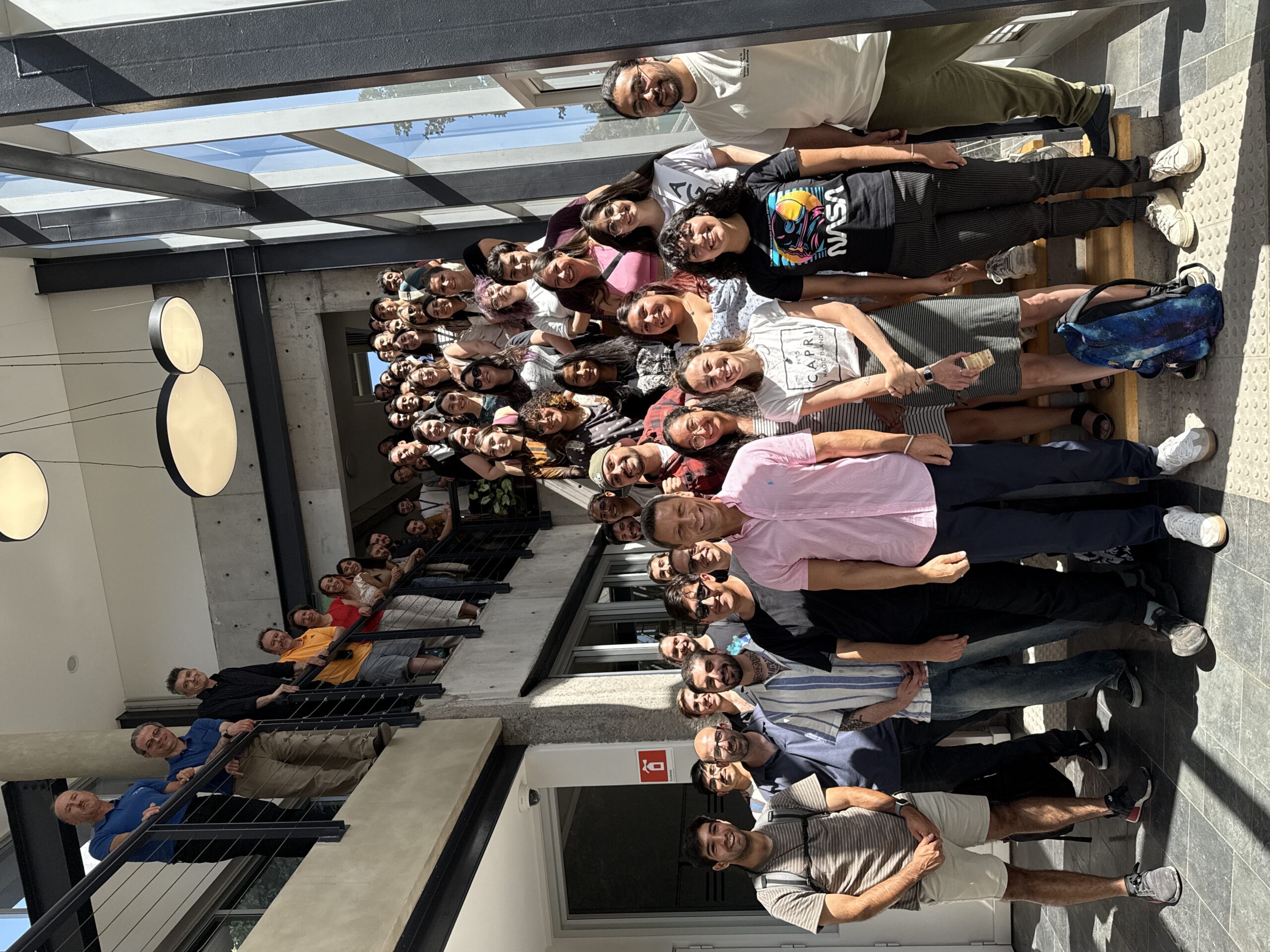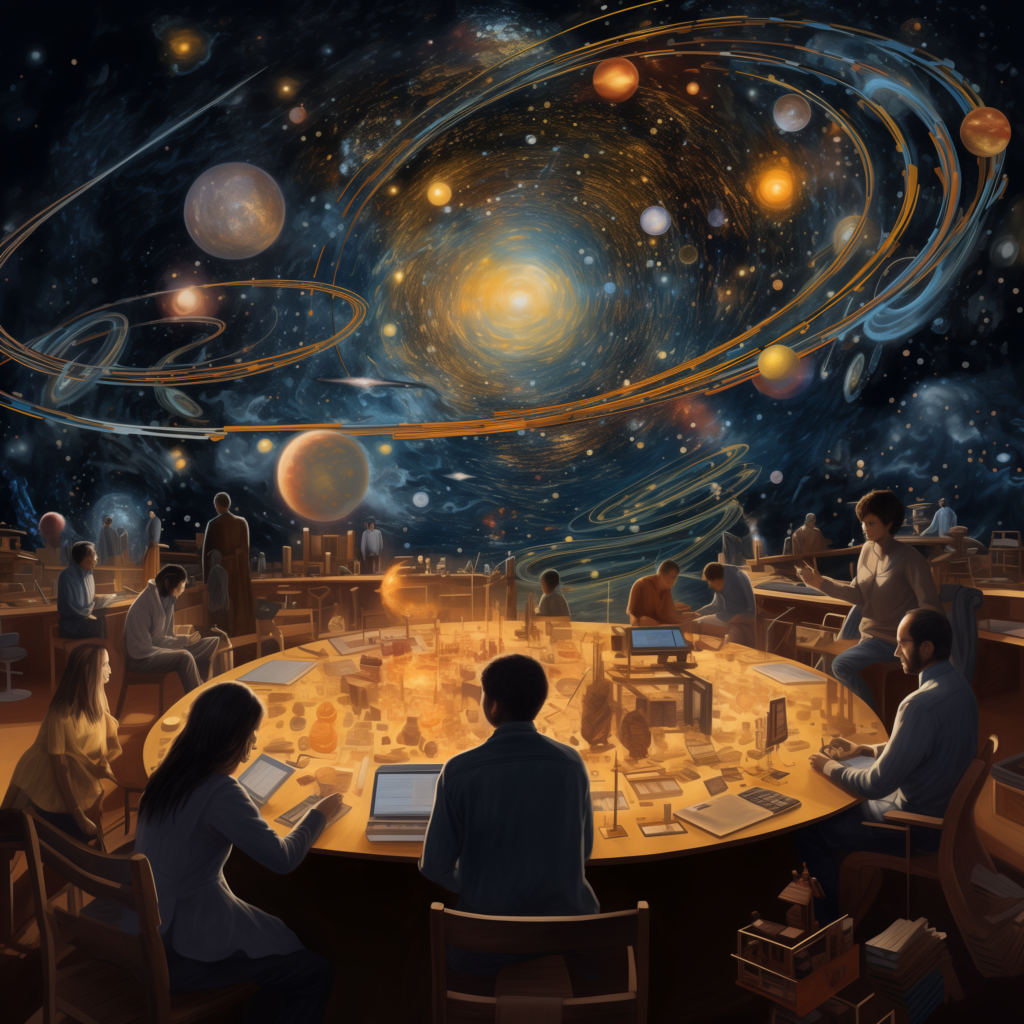Institute of Astrophysics Celebrates Success of 2024 Science Jamboree
30 November 2024
On November 29, the Institute of Astrophysics at the Pontificia Universidad Católica de Chile held its 2024 Scientific Jamboree, an event that brought together its academic community to share the latest advances in its astrophysics research.

With the participation of 15 professors, 20 postdoctoral researchers, and more than 50 undergraduate and graduate students, the meeting highlighted the diversity and depth of the scientific activities that characterize the institute.
Celebrating Potential and Academic Excellence
The Institute of Astrophysics is deeply proud of the talent and dedication of its students and postdocs, who demonstrate enormous potential to conduct leading, pioneering, and innovative research. These young researchers are at the forefront of the use of ground-based and space-based telescopes, leading theoretical studies, numerical simulations of complex astrophysical processes, and the development of cutting-edge astronomical instrumentation. Their enthusiasm and creativity are essential for pushing the boundaries of knowledge and consolidating the Institute as a global benchmark in astrophysics.
Cutting-edge research in galaxies and cosmology
The group Complex Stellar Systems, led by Prof. Dr. Thomas H. Puzia, presented progress on the Next Generation Fornax Survey (NGFS). This team has carried out a detailed analysis of star formation and galaxy evolution within the Fornax cluster, using high-precision data to detect globular clusters and dwarf galaxies. Their findings reveal three distinct mass regimes of galaxy formation, providing a more precise understanding of the evolution of galaxies of different masses. Furthermore, these studies highlight how gravitational interactions between galaxies can influence the dynamics and chemical composition of their stellar components.
For its part, the group AGN and Active Galactic Physics, coordinated by Prof. Dr. Ezequiel Treister and Prof. Dr. Franz Bauer, explored the complex dynamics of active galactic nuclei (AGN). Recent studies using advanced telescopes such as ALMA, VLT/MOONS, and NASA’s proposed AXIS mission to investigate the evolution of AGN at diverse scales and environments were highlighted. Furthermore, discoveries concerning galaxy mergers and the activation of supermassive black hole pairs, essential for understanding the growth of these structures and their influence on their host galaxies, were discussed.
Prof. Dr. Felipe Barrientos and the team BarrienLab presented research on the circumgalactic medium (CGM) and the cosmic reionization process. Using gravitational arc tomography and data from surveys such as LAGER and CIDER, the team was able to map gas properties in galaxies from the early Universe, investigating ionized bubbles around sources during the reionization epoch. These studies not only reveal details about the cold gas content of galaxies, but also provide new gravitational lensing models for analyzing galaxy groups and clusters with automated methods.
The group of the Prof. Dr. Patricia Tissera presented important advances in the understanding of galaxy formation and evolution using cosmological and subgrid physical simulations of chemical evolution. The CIELO project stood out as a key tool for studying galactic components such as stellar halos, disks, and bulges, as well as metal fluxes in low-mass galaxies. These simulations, supported by advanced computational tools, also make it possible to model the impact of supermassive black hole feedback on galactic chemistry and explore chemical patterns during major galactic mergers.
The team led by Prof. Dr. Jorge González-López highlighted the use of state-of-the-art telescopes, such as ALMA and the JWST, to investigate the evolution of molecular gas in low-mass galaxies during the epoch known as “cosmic noon.” Using gravitationally amplified samples, the group has identified unique properties of molecular gas, including elevated atomic content and possible effects of dark CO gas. These observations open new perspectives on how galaxies form stars and evolve under the extreme conditions of the early Universe.
On the other hand, the group led by Prof. Dr. Alejandro Clocchiatti highlighted a pioneering study of global anisotropies in the values of cosmological parameters based on distance measurements to hundreds of Type Ia supernovae. The results suggest the possibility of unknown physical phenomena on cosmological scales, challenging some of the current assumptions in cosmology and raising new questions about the homogeneity and isotropy of the universe.
Exploration of Stars and Stellar Phenomena
The team led by Prof. Dr. Márcio Catelan presented research on variable stars and the structure of the Galactic bulge. Using RR Lyrae stars as tracers, they were able to identify stellar substructures in dense regions of the Milky Way, providing key clues about the formation of our Galaxy. They also highlighted studies of RR Lyrae star light curves, which they hope will help optimize photometric models for future observations with the Rubin/LSST telescope.
Prof. Dr. Manuela Zoccali and her team presented groundbreaking results from the central region of the Milky Way, revealing the coexistence of two chemically distinct stellar components in the Galactic bulge. These components include a more metal-poor population, with a higher enrichment in [𝛼/Fe], with a spheroidal shape. Using spectroscopy, proper motion, and variable star data, the group continues to unravel the complex structure of this key region of our Galaxy. Furthermore, recent research explores nearby star-forming regions observed with the VVVX survey, highlighting accretion processes in young stars.
The group of the Prof. Dr. Viviana Guzmán presented important advances in the study of molecular gas distributions in protoplanetary disks, using high-resolution data obtained with the ALMA telescope. These studies not only shed light on the processes of planet formation but also explore the chemistry and dynamics of the gas in these systems, which are essential for understanding the evolution of planets and their atmospheres.
The group of Prof. Dr. Julio Chanamé presented research ranging from the internal structure of stars to the outer limits of the Milky Way. Highlighted findings include advanced models for lithium enrichment in red giants, dynamical studies of the galactic halo and its relationship with nearby dwarf galaxies, and analyses of triple star systems in the solar neighborhood. These investigations offer a comprehensive view of how the dynamics and chemical characteristics of stars and galaxies contribute to the understanding of galactic structure and cosmic evolution.
The Stell-stein group, led by Prof. Dr. Claudia Aguilera , highlighted research on the dynamics of exoplanets and binary star systems. Recent studies have analyzed the effects of close stellar encounters on planetary systems and advanced methods such as Doppler tomography to measure orbital inclination relative to stellar rotation. These investigations not only deepen our understanding of the stability of complex planetary systems but also expand our knowledge of the interactions between exoplanets and their host stars.
Cosmic Microwave Background Research and Radio Astronomy Instrumentation
Prof. Dr. Rolando Dünner’s group presented innovative research focused on understanding the polarization signals of the cosmic microwave background (CMB). Using a drone-mounted calibration source, they were able to make precise measurements to advance the interpretation of these fundamental cosmological signals. This pioneering approach not only optimizes current tools but also sets a standard for future research in experimental cosmology.
For its part, the group of the Prof. Dr. Marilyn Cruces highlighted an ambitious radio astronomy instrumentation project designed to study fast radio bursts (FRBs). This project includes the construction of an interferometric radio telescope at the Institute, capable of continuously monitoring the sky in search of these enigmatic signals. This effort promises to contribute significantly to our understanding of the physical processes behind FRBs and their connection to extreme events in the universe.

Fostering Collaboration and Learning
The Science Jamboree not only served as a platform to showcase cutting-edge research but also to foster interdisciplinary collaboration and learning among Institute members. The combination of oral presentations and interactive discussion sessions allowed participants to reflect on the impact of their work on the global scientific community. With initiatives like this, the Institute of Astrophysics reaffirms its commitment to excellence in research and academic training, consolidating its position as a benchmark in the field of global astrophysics.
The Institute of Astrophysics expresses its sincere gratitude to all those who contributed to the success of this event, particularly to the organizing team consisting of Prof. Dr. Patricia Tissera, Norah Boisset, Mauricio Barz, and Diego Venegas, whose commitment and dedication were instrumental in making this memorable event a reality.
Información
local_offer Etiquetas